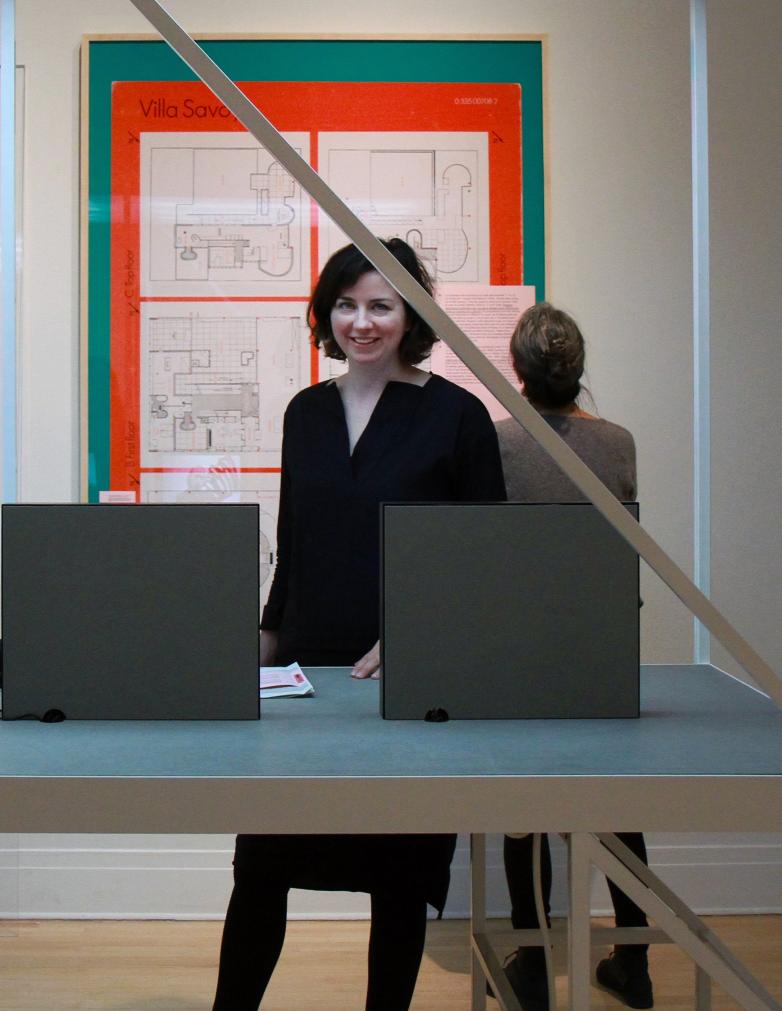Bright Young Librarians: Jennifer Garland

Jennifer Garland
Our Bright Young Librarians series continues today with Jennifer Garland, Assistant Head Librarian in the Rare Books and Special Collections library at McGill University in Montreal.
What is your role at your institution?
I am Assistant Head Librarian, Rare Books and Special Collections at McGill University Library in Montreal, Quebec.
Our collection is based primarily in the humanities and social sciences, with particular strengths in children’s books, the history of the book, Canadiana, the history of ideas, and an important collection in natural history. I am curator of the architecture and art collection, which includes a wonderful selection of Renaissance architectural treatises, a print collection, hundreds of 18th-19th century woodblocks, and an archive of architectural drawings, photographs, and papers related to Canadian architecture. I work with researchers, teach classes, lead tours, prepare exhibitions, contribute to @mcgill_rare on instagram, and share responsibility for the planning and running of the unit.
How did you get started in special collections?
I first set foot in a special collections library around the time that I was deciding if I would pursue a masters in information studies or in art conservation. I went for the MLIS and completed my degree at McGill University. I managed to obtain a part-time student job in rare books and was hooked! After graduation, I worked elsewhere for a few years before returning to McGill for an academic appointment as liaison librarian, finally joining Rare Books and Special Collections in 2012.
Favorite rare book / ephemera that you've handled?
I love colour dictionaries. These are books of colour samples, often hand-painted, created to develop a standardized visual language for describing the natural world. Robert Ridgway’s Color Standards and Color Nomenclature (1912) is one example that became a standard reference text for scientists, collectors, and others to assign precise names to their specimens. Werner’s Nomenclature of Colours (1821) is the first colour book I encountered and it will always have a special place in my heart. In this work, each pigment is described in terms of animal, plant, and mineral sources where the colour is found in nature, e.g. verdigris green may be found on the “tail of small long-tailed green parrot” and on “copper green.”
What do you personally collect?
I save the serious book collecting for the professional part of my life, but I do enjoy rummaging at book fairs and second-hand book shops and am slowly building a home collection of art and photography books.
What do you like to do outside of work?
Travel is a favourite extracurricular activity. Recent trips included exploring desert landscapes in US national parks and swimming at beaches along Canada’s east coast.
What excites you about special collections librarianship?
One of the highlights of my job is sharing collections, with an aim to make all visitors feel welcome in our reading room. I will never tire of seeing students’ enthusiasm for exploring/discovering/handling special collections and I love that students show me new and different ways of thinking about our collections. I am excited that there is still so much of the collection I haven't explored yet, and that "spend time in the stacks" is a recurring Friday afternoon appointment in my calendar.
Thoughts on the future of special collections librarianship?
I think special collections librarians will benefit from a continued and increased focus on collaboration with our communities, with colleagues at peer institutions, and at our home institutions. At McGill Library, we’ve brought together four special collections units as “ROAAr”: Rare Books & Special Collections, the Osler Library of the History of Medicine, the Visual Arts Collection, and Archives & Record Management. This cross-unit collaboration strengthens us individually and presents a more unified whole for research, collections activities, and management. ROAAr librarians and archivists also benefit greatly from collaborations with staff from other branches of McGill Library, working together on exhibitions, workshops, and special projects. We’ve also forged new networks through grant-writing, allowing for new research avenues or the bringing together of complementary collections from different institutions in a virtual environment.
Any unusual or interesting collection at your library you'd like to draw our attention to?
My colleagues are working to catalogue and digitize McGill’s collection of manuscripts. A selection of manuscripts written in the Arabic, Persian, Ottoman-Turkish, and Urdu languages is available online. The complete collection of Books of Hours was recently digitized and the team has started work on the medieval music manuscripts, including exemplars with beautiful illumination and calligraphy. One of these, a large 15th-century choirbook, was recently brought to life by a choir of students, librarians, and musicians, who sang from the manuscript at a special event, Saints Alive!
We will soon launch the McGill Library Book Arts Lab, a pressroom to be used in teaching the history of the book and for outreach activities. At the heart of the pressroom is our magnificent Columbian printing press, recently reassembled after restoration off-site. During the restoration, the press was dated to 1821 by a serial number on one of the machine parts, making it the oldest known surviving press of its kind in North America, designed and manufactured by George Clymer.
Any upcoming exhibitions at your library?
Our fall exhibition will look back at fifty years since the decriminalization of homosexuality in Canada. We are also working on a series of displays in our reading room to complement the fall 2019 McGill Conversations series - six evenings of conversation with writer and bibliophile, Alberto Manguel, and his guests, on topics ranging from detective fiction to fairy tales. Looking ahead, we will have special programming in place for McGill’s Bicentennial celebrations (2020-21) and two major conferences coming to Montreal in 2021: the Art Libraries Society of North America (ARLIS/NA) Annual Conference, which I will co-chair, and the Society of Architectural Historians (SAH) Annual International Conference. Follow our exhibitions and events here.















